Castiglione del Lago
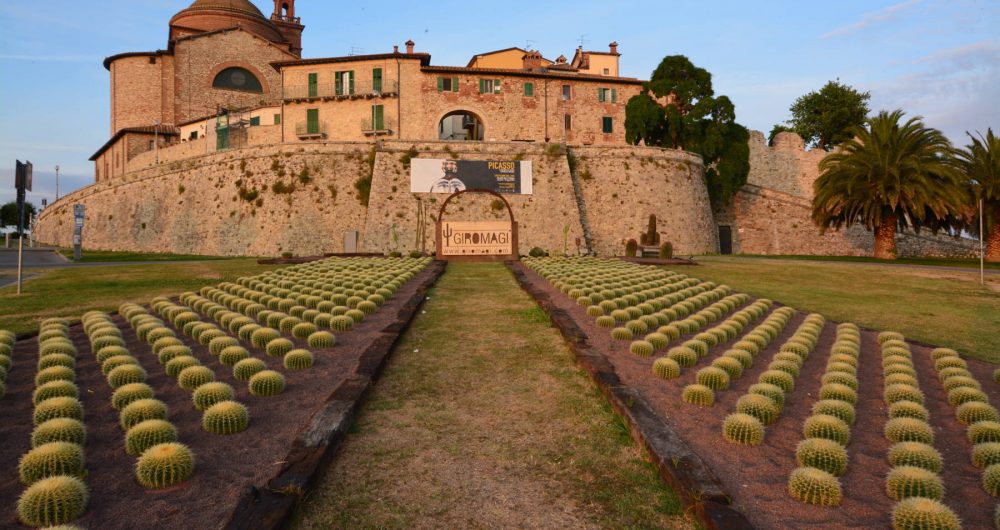
Castiglione del Lago, one of “The Most Beautiful Villages of Italy” for the remarkable artistic heritage, environmental and cultural. The small town of Etruscan origin is located on a promontory on the western shore of Trasimeno Lake. The old town is surrounded by medieval walls with three gates: Perugina, Senese and Fiorentina. To visit is the medieval fortress, built in 1247, that it consists of five towers, three gates and is dominated by the characteristic triangular tower about 30 meters high, from which you can admire a beautiful view of the lake. Of great artistic value is Palazzo della Corgna, built in 1560 is the only small “palace” existing in Umbria. The beautiful rooms, painted by Nicholas Circignani “The Pomarancio” and Salvio Savini, with mythological scenes and businesses of the captain of Ascanio della Corgna.
Città della Pieve
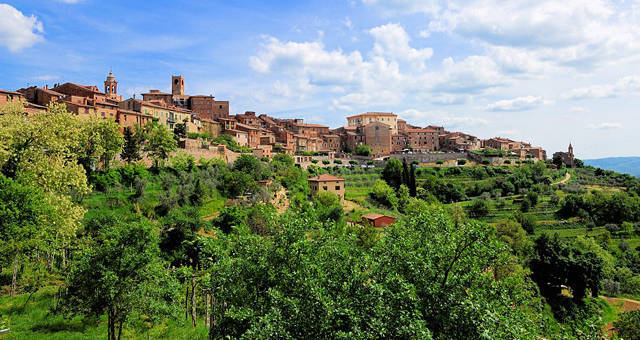
Città della Pieve, situated in the western part of Umbria, thanks to its scenic location overlooking Trasimeno Lake and the Valdichiana. The small medieval town rich in art, history and culture is home to one of the most important painters of the Italian Renaissance, Pietro Vannucci, known as Perugino. The urban form of Citta della Pieve takes the form of an eagle, where the three parts of ‘”eagle” coincide with the three neighborhoods, the administrative subdivisions of the city Terziere Castello, Terziere Borgo Dentro and Terziere Casalino. To visit is the Cathedral of Saints Gervasio and Protasio that preserves the works of two important painters of Città della Pieve, Perugino and Pomarancio. Also interesting is the church of Santa Maria dei Bianchi, where is the beautiful “Adorazione dei Magi”” by Perugino
Panicale
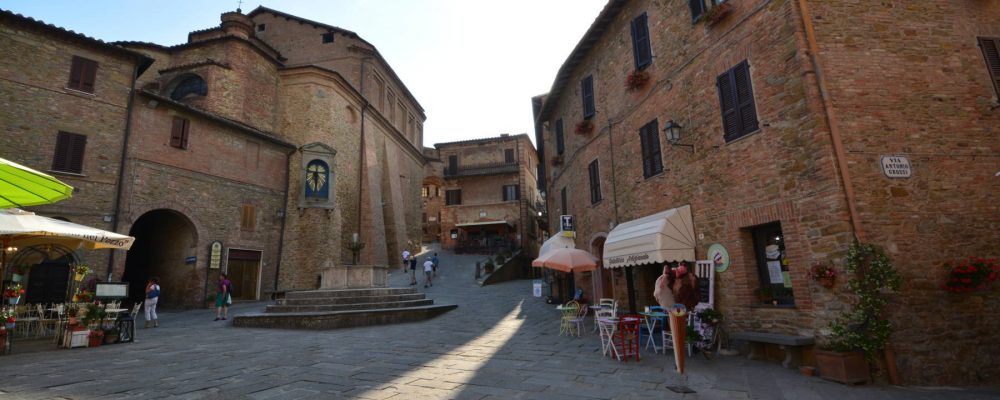
Panicale, defined a natural terrace overlooking Trasimeno Lake, is a medieval village which lies on the hill at the foot of Mount Petrarvella and placed between the valley of Trasimeno Lake and the valley of the Nestòre River. Besides being one of the ” The Most Beautiful Villages of Italy ” for its natural beauty, history and culture, is also Orange Flag of Italian Touring Club since 2007 thanks to the relevance of its artistic heritage and landscape and numerous events. Panicale retains the typical structure of a medieval castle, with two entrances to and from Florence and Perugia with its three squares, the most significant is definitely Piazza Umberto I, that is the ancient cistern of the country, fifteenth century, which was turned into a fountain in the ‘900 and the majestic Collegiata di San Michele Arcangelo.
Perugia
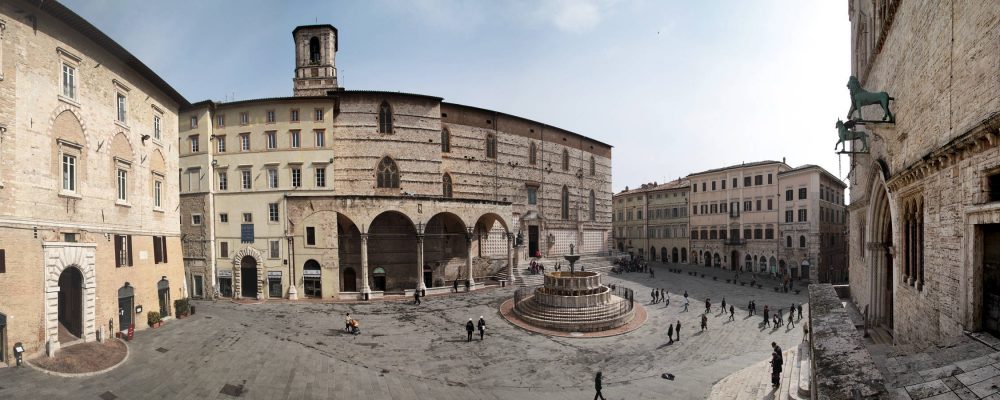
Perugia, capoluogo dell’Umbria, è una città d’arte, ricca di storia e monumenti, fondata dagli Etruschi, è polo culturale della regione, meta turistica e sede universitaria. Uno dei principali monumenti della città e di tutta la scultura medievale è la Fontana Maggiore, risalente al 1275-1278 e collocata nella piazza principale della città. La più grande e monumentale delle porte di accesso alla città vecchia è l’Arco Etrusco, dove a tutto sesto è incisa la scritta “Augusta Perusia”. Costruita tra il 1540 e il 1543 per volere di papa Paolo III, la Rocca Paolina è sicuramente uno degli edifici più importanti della città, fino al 1860, ha rappresentato, il simbolo del potere papale sull’antico comune. Oggi la Rocca Paolina è attraversata da un percorso di scale mobili che collegano Piazza Partigiani a Piazza Italia, in centro.
Cortona
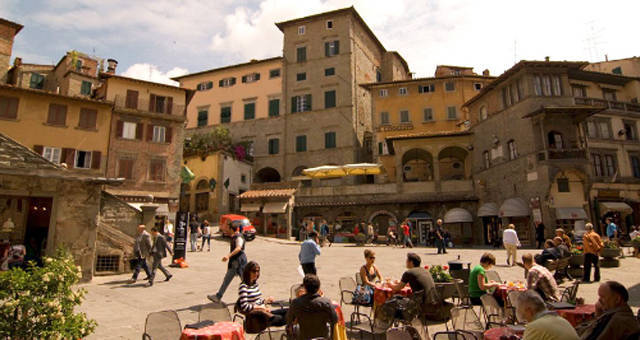
Cortona, near Arezzo, is an important cultural and tourist center of the ValdiChiana. Ancient “lucumonia”, part of “Dodecapolis Etruscan”, Cortona is located south of the province of Arezzo and in the southeast region of Tuscany, on the border with Umbria and just a few kilometers from Trasimeno Lake. From its 500 meters high dominates the ValdiChiana, the view reaches the horizon to find the peaks of Mount Amiata and the Trasimeno Lake. The walls surrounding Cortona, the medieval structures and narrow streets are a characteristic feature of the landscape, giving an immersive atmosphere to the entire city. Out of town, at the foot of the hill, are the Meloni I and II of Sodo, Etruscan tumulus tombs of the sixth century BC.
Assisi
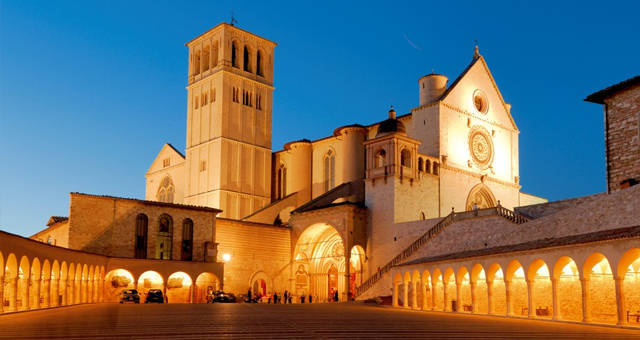
Assisi is situated in province of Perugia, in Umbria, and is located on the northwestern slope of Mount Subasio, in a moderately raised above the northern Valle Umbra. It is known for being the city where they were born, they lived and died in San Francesco, patron saint of Italy, and Santa Chiara. Destination for many tourists, Basilica of San Francesco di Assisi, is the place that preserves, from 1230, the mortal remains of the saint seraphic. Ordered by Pope Gregorio IX, in 1754 Benedetto XIV he has elevated to the dignity of the Patriarchal Basilica, today “Papal” and Papal Chapel. In 2000, along with other Franciscan sites of the district, the basilica was included in the list of UNESCO World Heritage Site. An important place of worship of the historic center of Assisi is also the Basilica of Santa Chiara, built between 1257 and 1265.
Montepulciano
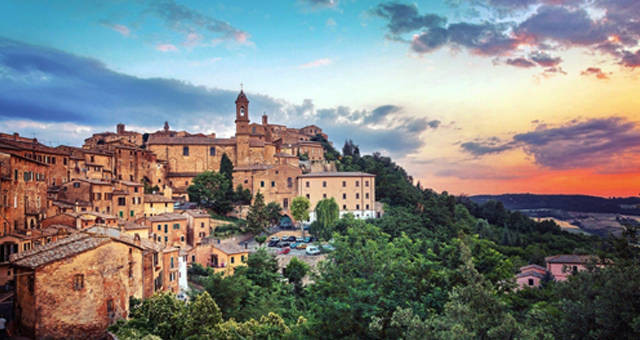
Montepulciano, Tuscan town in province of Siena, is a common place to 605 meters above sea level, between the ValdiChiana and Val d’Orcia. Of ancient and long history, Montepulciano has origins from the Etruscans. Its fame derives from the wealth of excellent vineyards from which we can obtain the Vino Nobile di Montepulciano DOCG. One of the most beautiful squares in Italy is Piazza Grande, the monumental center of the city and the highest part of Montepulciano. Here is the beautiful cathedral, in the small open space between the Palazzo dei Nobili Tarugi and the Palazzo del Capitano del Popolo is the characteristic Pozzo dei Grifi e dei Leoni with Medici coat of arms, and some of the most beautiful buildings of Montepulciano designed by the best architects of Renaissance.
Siena
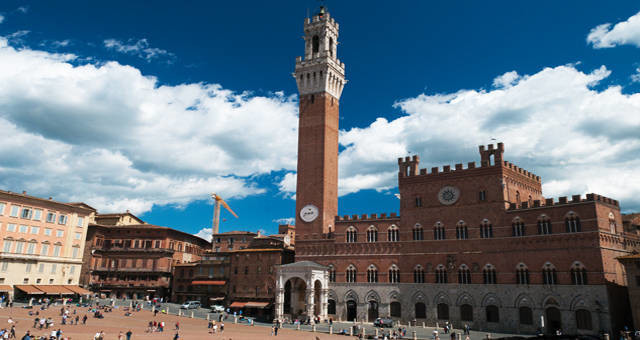
Siena is a Tuscan city known for its historical, artistic, landscape and for its medieval urban layout, its historic center has been awarded by UNESCO as a World Heritage site in 1995 Siena it is also famous for the Palio , a race of horses ridden bareback, between different districts of Siena that monopolizes the attention of the city for several days. The event is extremely important for the city, is the expression of the ancient and rooted Sienese tradition. In the town the seat of the Banca Monte dei Paschi di Siena, founded in 1472 and thus the oldest bank in business as well as the longest in the world.
